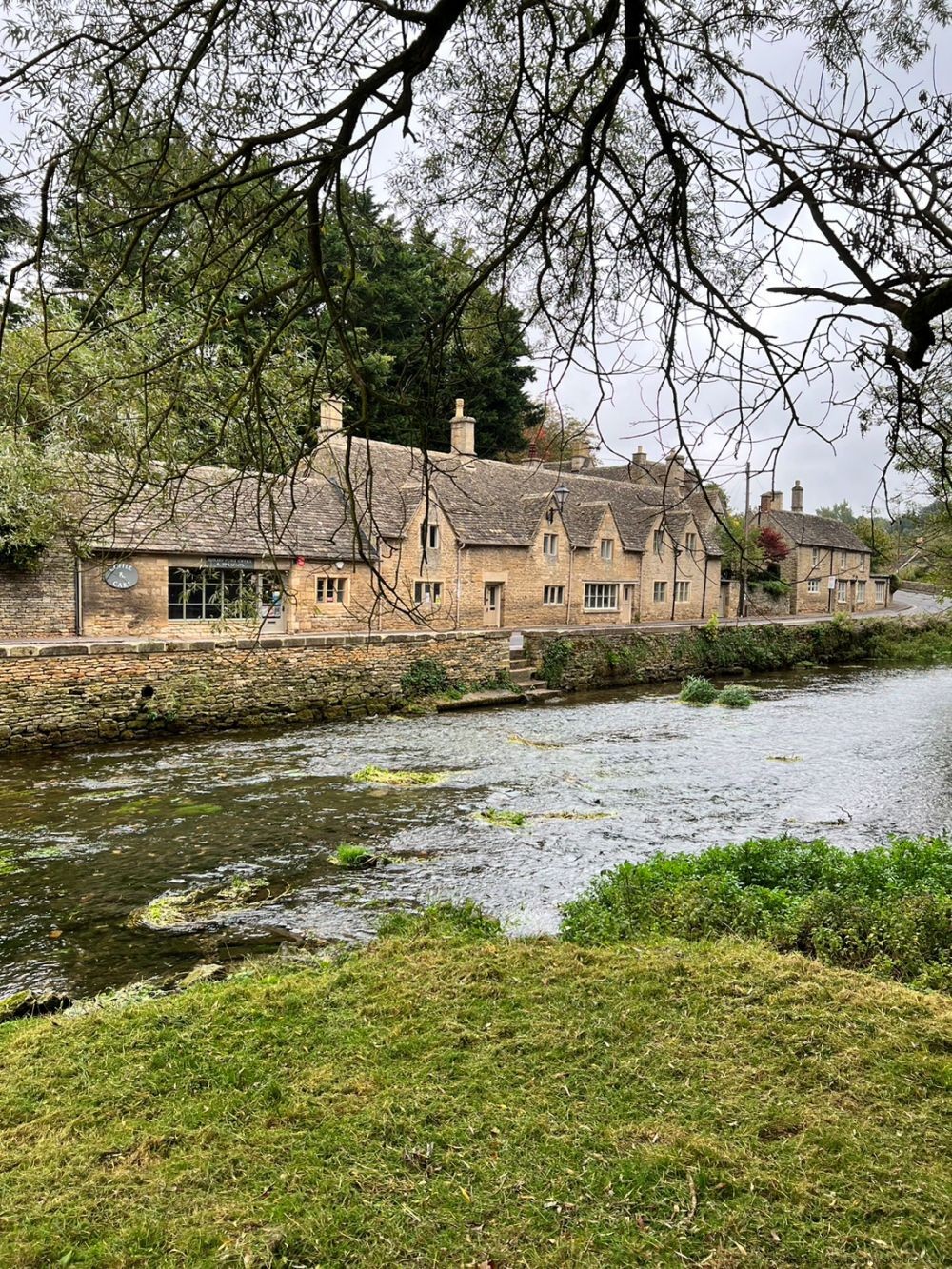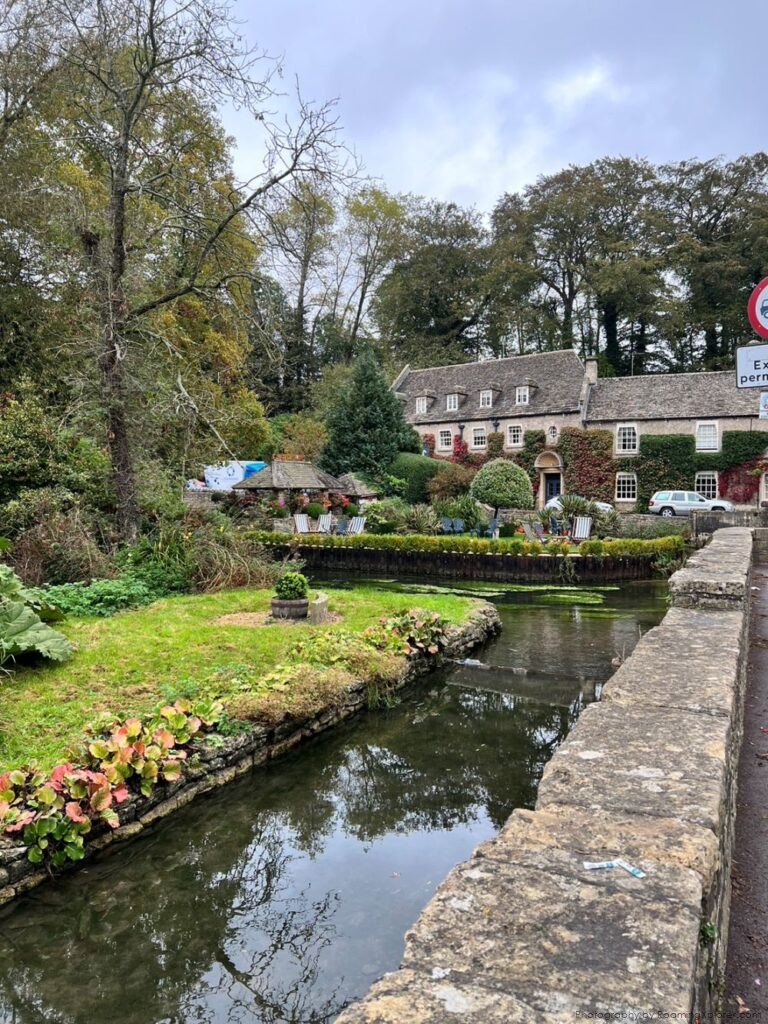Bibury, a picturesque village in the heart of the Cotswolds, is a timeless destination known for its rich history, iconic architecture, and stunning countryside. Frequently referred to as one of the most beautiful villages in England, Bibury attracts visitors from across the globe. This article explores the history of Bibury, its cultural significance, and what makes it a must-visit village today.

If you’re planning a trip to the Cotswolds or looking for an English countryside retreat, Bibury should be high on your list. Let’s delve into Bibury’s fascinating history and why it remains a beloved destination for travelers.
History of Bibury: From Saxon Village to Wool Trade Hub
Bibury’s roots stretch back to Saxon times, first mentioned in the Domesday Book of 1086 under the name “Becheberie.” At that time, it was a small agricultural settlement, primarily focused on farming. The village’s location in the fertile lands of the Cotswolds made it ideal for sheep farming, which would shape Bibury’s economic and cultural future.
During the medieval period, Bibury became a significant player in the booming wool trade, a vital industry in England. The high-quality wool produced in the region was in demand across Europe, and Bibury’s weavers capitalized on this. One of the village’s most iconic landmarks, Arlington Row, was built in the 14th century as a wool store before being converted into weavers’ cottages in the 17th century.

Arlington Row: The Icon of Bibury
No visit to Bibury is complete without admiring Arlington Row, one of the most photographed and recognizable spots in the Cotswolds. Originally built for storing wool, Arlington Row is now a National Trust property that stands as a symbol of Bibury’s prosperous wool trade history.
The steeply pitched roofs, mullioned windows, and riverside setting make Arlington Row one of the most picturesque streets in England. This row of historic weavers’ cottages provides a direct link to the people who once lived and worked here, helping shape Bibury into the village it is today.

The People of Bibury: A Close-Knit Rural Community
The story of Bibury is incomplete without its people. Throughout its history, Bibury’s residents have been deeply connected to the land and the wool trade. During the medieval period, the village was primarily composed of farmers and weavers. The proximity to the River Coln played a crucial role in wool production, as water was needed for washing and treating the wool.
In later centuries, Bibury’s economy shifted towards agriculture and small-scale farming as the wool industry declined. Despite economic changes, the village maintained a tight-knit community where traditions were passed down through generations. Today, many residents work in agriculture and tourism, with some families having lived in the area for centuries.




The Economy of Bibury: From Wool to Tourism
For centuries, Bibury’s economy was driven by the wool trade. The village’s reputation for high-quality wool helped put Bibury on the map, and Arlington Row stands as a reminder of this prosperous era. However, by the 18th century, the wool industry began to decline, and Bibury had to adapt.
In the early 20th century, Bibury Trout Farm was established, diversifying the village’s economy. Founded in 1902, it remains one of England’s oldest working trout farms and a popular attraction for visitors. The shift to tourism in the 20th century brought new life to Bibury, with travelers from around the world coming to experience its tranquil beauty and historic landmarks.
Today, tourism is the primary economic driver in Bibury. The village’s timeless charm, combined with its proximity to the rest of the Cotswolds, makes it a top destination for day-trippers and holidaymakers alike.

Bibury Today: A Perfect Blend of History and Modern Life
Bibury has managed to maintain its historic character while adapting to modern life. Walking through the village feels like stepping back in time, with its narrow lanes, traditional Cotswold stone buildings, and the peaceful River Coln flowing through the center.
Today’s Bibury is a thriving community, though small in size. Many of the residents work in tourism, local agriculture, and hospitality. The Bibury Trout Farm continues to operate, providing fresh trout to local markets and restaurants while also serving as a popular visitor attraction.
Bibury has also attracted second-home buyers and retirees looking for a quiet escape to the countryside. Despite these changes, the village’s community spirit remains strong, and efforts to preserve its unique charm are ongoing.
Culture and Traditions in Bibury
The culture of Bibury is deeply rooted in its agricultural past and its role in the wool trade. The village’s historic St. Mary’s Church, a Norman building dating back to the 12th century, is a central part of local life and a reminder of the village’s long history.
Traditional events like the Bibury village fair continue to bring the community together, celebrating the area’s rural heritage with food, crafts, and local produce. The Bibury Trout Farm also hosts various seasonal events, such as fishing competitions and educational tours, which attract both locals and visitors.
Artists and photographers have long been inspired by Bibury’s beauty, and it’s not hard to see why. The village has been immortalized in countless paintings, postcards, and travel guides, making it one of the most well-documented locations in the Cotswolds.

Why You Should Visit Bibury: A Timeless Cotswold Destination
There are countless reasons why Bibury is worth a visit. From its iconic Arlington Row to its tranquil riverside setting, the village offers a perfect blend of history, culture, and natural beauty. It’s an ideal destination for anyone looking to explore the Cotswolds, whether you’re interested in photography, history, or simply enjoying a peaceful day in the English countryside.
When you visit Bibury, be sure to stop by Bibury Trout Farm for a taste of fresh, locally farmed trout, explore St. Mary’s Church, and take your time wandering through the streets, soaking in the atmosphere. The village’s unique charm will transport you back to another era while offering the comforts of modern-day hospitality.
Plan Your Trip to Bibury: Key Information
If you’re planning a trip to the Cotswolds, Bibury should definitely be on your itinerary. Whether you’re interested in history, scenic walks, or sampling fresh local produce, Bibury has something for everyone. The village is easily accessible from major towns in the Cotswolds, making it a convenient stop on any road trip.
For a full experience, consider visiting outside peak tourist seasons to fully enjoy the peaceful ambiance of the village. Don’t forget to bring your camera—Arlington Row and the surrounding countryside are among the most photogenic spots in England.
Bibury is a timeless destination that offers visitors a chance to experience the rich history and natural beauty of the Cotswolds. Whether you’re drawn by its iconic architecture, tranquil riverside setting, or cultural heritage, Bibury is a place that leaves a lasting impression.
![]()

